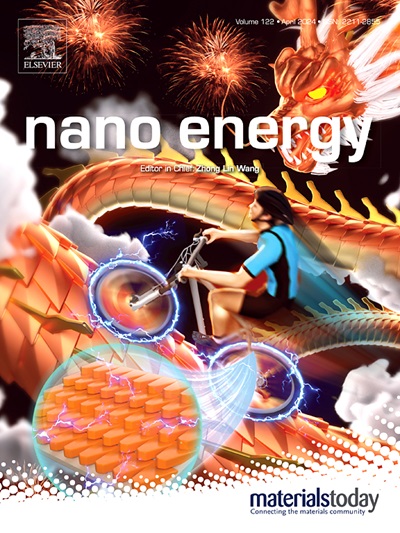Interface engineering of heterostructural quantum dots towards high-rate and long-life lithium-sulfur full batteries
IF 17.1
1区 材料科学
Q1 CHEMISTRY, PHYSICAL
引用次数: 0
Abstract
Despite being as next-generation energy storage systems with ultra-high theoretical energy density of 2600 Wh kg−1, lithium-sulfur (Li-S) batteries face serious hurdles due to the sluggish redox kinetics in S cathodes and uncontrollable growth of dendrites in Li anodes. To simultaneously address such issues, herein, we present an interface engineering strategy to develop a dual-functional host for S cathode and Li anode, which is constructed by heterostructural WC-WN0.67 quantum dots homogeneously embedded in N-doped graphene nanosheets (WC-WN0.67@NG). As a result, the Li-S full batteries deliver a high reversible capacity of 704 mA h g−1 even at a high rate of 4 C, and demonstrate a long-term cycling stability even at 2 C with a low degradation rate of 0.027 % over 1200 cycles. This work paves the way to facilitate the practical applications of Li-S batteries through interface engineering of dual-functional heterostructural quantum-dot host.

实现高倍率和长寿命锂硫全电池的异质结构量子点界面工程学
尽管锂硫(Li-S)电池是下一代储能系统,具有 2600 Wh kg-1 的超高理论能量密度,但由于 S 阴极氧化还原动力学迟缓以及锂阳极树枝状生长不可控,锂硫(Li-S)电池面临着严重的障碍。为了同时解决这些问题,我们在本文中提出了一种界面工程策略,以开发一种锂阴极和锂阳极的双功能宿主,该宿主由均匀嵌入 N 掺杂石墨烯纳米片(WC-WN0.67@NG)的异质结构 WC-WN0.67 量子点构建而成。因此,即使在 4 C 的高倍率条件下,这种锂-S 全电池也能提供 704 mAh g-1 的高可逆容量;即使在 2 C 条件下,这种电池也具有长期循环稳定性,在 1200 次循环中的降解率仅为 0.027%。这项工作为通过双功能异质结构量子点主界面工程促进锂离子电池的实际应用铺平了道路。
本文章由计算机程序翻译,如有差异,请以英文原文为准。
求助全文
约1分钟内获得全文
求助全文
来源期刊

Nano Energy
CHEMISTRY, PHYSICAL-NANOSCIENCE & NANOTECHNOLOGY
CiteScore
30.30
自引率
7.40%
发文量
1207
审稿时长
23 days
期刊介绍:
Nano Energy is a multidisciplinary, rapid-publication forum of original peer-reviewed contributions on the science and engineering of nanomaterials and nanodevices used in all forms of energy harvesting, conversion, storage, utilization and policy. Through its mixture of articles, reviews, communications, research news, and information on key developments, Nano Energy provides a comprehensive coverage of this exciting and dynamic field which joins nanoscience and nanotechnology with energy science. The journal is relevant to all those who are interested in nanomaterials solutions to the energy problem.
Nano Energy publishes original experimental and theoretical research on all aspects of energy-related research which utilizes nanomaterials and nanotechnology. Manuscripts of four types are considered: review articles which inform readers of the latest research and advances in energy science; rapid communications which feature exciting research breakthroughs in the field; full-length articles which report comprehensive research developments; and news and opinions which comment on topical issues or express views on the developments in related fields.
 求助内容:
求助内容: 应助结果提醒方式:
应助结果提醒方式:


